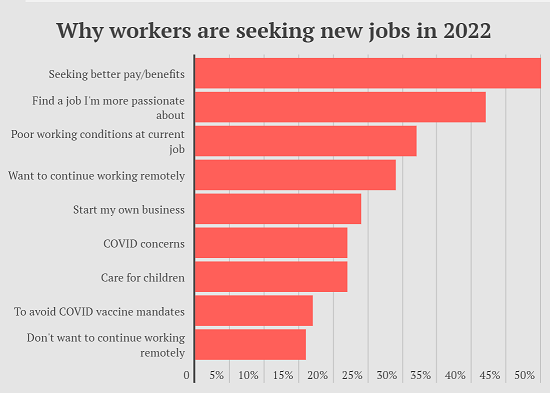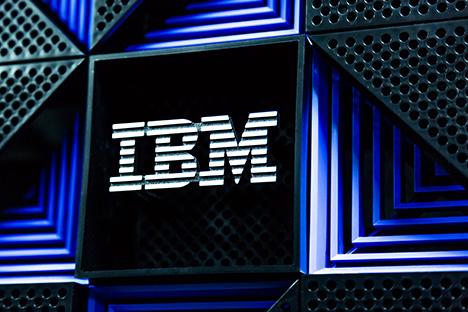Thoughts For Thursday: Rallies To Nowhere?
It's hard to see where the market is going when hard rally days are followed by drops. Still, the S&P 500 is up about 200 points from a month ago, the Dow 1,200 points and the Nasdaq 700 points.

Wednesday the S&P 500 closed at 3,960, up 23 points, the Dow Jones Industrial Average closed at 31,875, up 48 points and the Nasdaq Composite closed at 11,898, up 185 points.

Chart: The New York Times
Most actives were all big board issues and all closed up.

Chart: The New York Times
Currently, market futures are mixed in early morning action. S&P market futures are down 4 points, Dow market futures are down 72 points and Nasdaq 100 market futures are up 18 points.
The Staff over at contributor Tactical Investor also don't know exactly what to make of the Summer Stock Market Rally?, but they are from the high risk, buy low, reap the benefits school of thought and here is some of their current thinking:
"We expected the markets to correct last year, but it was projected/expected to occur in two phases. The sanctions against Russia and not the war have exacerbated the situation. Hence, it appears that the market is experiencing both these corrections simultaneously. Does this mean the markets won’t experience a secondary correction? If the energy crisis in Europe is not resolved, then despite this strong corrective phase, the odds are very high that the markets will experience another correction in the 4th quarter. Stable energy and food prices are essential ingredients for growth and market stability...
The Geopolitical situation is on turbocharging now as the dumbest humans alive happen to be the leaders of the Western World. Calling it a recipe for disaster would almost sound quaint. The situation could change on the fly but never forget this slogan. The larger the deviation (from the norm), the better the opportunity. The top players are greedy, and the end game is always to make more money, and there is no way they can make more money if the markets crash permanently. They will create the illusion of a permanent crash, but it will only be an illusion, and those that fall prey to it will cry for years to come. You can bank on that...
The mantra has changed from how high stocks can go to how low they will trade. When opportunity knocks, be sure not to shy away. In the short term, the outlook will remain volatile, but as history indicates, the best time to buy is when you and everyone you know are scared to press the buy button...
The markets are trading in the oversold zone, and the risk-to-reward ratio is now in the buyers’ favor...
You have to be in it, to win it...
Summer Stock Market rally 2022 is becoming a reality but don’t be enamored by this rally, for unless the trajectory changes dramatically, it will fizzle around October. However, there is plenty of time to book serious gains between now and October."
See the full article for more action movie banter.
TalkMarkets contributor Michael Kramer does not think the current rally has anyplace to go noting, Stocks Rise Again On July 20, 2022, As Complacency Builds.
"Stocks managed to rally on a very volatile day, with the S&P 500 rising by more than 1%, then falling back to flat, and then managing to finish up around 60 bps. The index was very close to breaking out today and clearing a resistance level at 3,960, but it got stuck up there and stalled out. Additionally, the RSI has topped out on the 1hr chart, suggesting momentum may have peaked."
(Click on image to enlarge)

"Additionally, we hit a resistance zone on my fib grid. I have found that this sell-off has been very symmetrical in direction. The current level of 3,950 could be one spot where the rally stalls out.
The VVIX is near its lows and gives a sense of complacency in the market heading into the next FOMC meeting. If the VIX doesn’t rise, it will be going into the FOMC at its lowest level this year. It is an under / over I would want to take the under on. But, hey there are a lot of people out there who think things are just great because the S&P 500 has gone up a two days in a row."
Taking a look at how things are playing out at the individual stock level, Kramer includes his current takes on TSLA, NFLX and BA. Below is what he has to say about Boeing.
"Boeing rose above resistance today and has an RSI that is approaching 70. The stock has a bit further to climb before completing the gap fill at $167. The stock has a good chance to fill the gap, but I’m not sure there is much additional room for it to rise near-term after that."

When talk turns to recession one of the first topics to come up is the labor market. Two TM contributors weigh in.

Contributor Ironman discusses The Teen Canaries In The Coal Mine.
"When the U.S. economy falls into recession, there's one demographic group that can expect to feel a lot of pain: working teenagers.
That's because, unlike every other demographic group, teens have the least education, the fewest skills, and the lowest amount of job experience. That combination makes American teenagers the most marginal of all workers and puts them most at risk of either losing their jobs or never being hired when the economy goes into recession...And the U.S. economy is at an elevated risk of recession."
Ironman has a couple of slices at the teen employment data. I've included one of them below. So far, it doesn't look that bad. Whisper "soft landing" under your breath as you read the chart.

"This data confirms most of the recent trends we described in the raw numbers. For example, employment among the Age 16-17 has trended down since April 2022, falling from a peak of 25.8% to 23.7% in June 2022, coinciding with what we observed in their employment level.
But the data for the older portion of the teen labor force shows something different than what we would have expected from the employment level data. Here, we see that the Age 18-19 employment-to-population ratio peaked at 44.1% in November 2021 before trending downward to June 2022's level of 42.2%. By contrast, the employment level rose by 200,000 from 3,243,000 to 3,443,000 during that time.
Finally, we see the pattern for the combined Age 16-19's employment to teen population follows the same pattern we saw in the employment data. It peaked in March 2022 at 33.2% before falling slowly to 32.6% in June 2022.
While we do see developing downtrends in portions of the teen employment data, at this point, they're not yet consistent with the kind of employment declines the teen population has seen in previous recessions."
Contributor Charles Hugh Smith looks at Why The Labor Shortage Isn't Going Away. The article is a strong Op-Ed piece but below are some points worth noting:
"Young people enter the workforce, the elderly retire. The smaller the population of young people, the smaller the workforce. The wrinkle here is that a great many more people 65 and older are continuing to work rather then retire in the U.S., extending their working life. This has stabilized the size of the workforce (around 160 million) even as the population has aged...But a rapidly aging population brings with it a rapidly aging workforce, and this has consequences. Some older workers may be desperate enough to take toxic low-pay jobs, but many are no longer physically able to do these jobs. The majority of over-65 workers are working because the work suits them. Once it doesn't suit them, i.e. it's toxic and unrewarding, they're gone."
"If robots are so cheap and versatile, then why does Amazon have 1.6 million human employees? They seem like pretty sharp operators; would they really bother having human workers if robots could do all the work, and do it without healthcare insurance? Technology has physical and financial limits."
"It's getting hard to fill toxic low-pay jobs, and that's not going to change."
Below is one of the charts Smith includes in his article. If the economy does go into deep recession, it will be interesting to see how the bars on this chart move.

Closing out the column for today we check in with the "Where to invest Department" and TalkMarkets contributor Marc Lichtenfeld who writes Don’t Worry About 5%-Yielding IBM’s Falling Free Cash Flow.

"At one time, International Business Machines (IBM), better known as IBM, was the quintessential American technology company. It was known for big and consistent profits.
It’s been a long time since IBM has been on top. In fact, the stock is trading 32% lower than where it was 10 years ago. So IBM may not be the growth stock of yesteryear, but it’s still attracting income investors with its 5% dividend yield.
Can investors rely on Big Blue to continue to pay that dividend?
IBM’s free cash flow fell dramatically in 2021 and is forecast to be at just about the same level this year. In 2023, free cash flow is expected to rise...A deeper look reveals that the free cash flow tumble in 2021 had nothing to do with earnings or revenue. In fact, both were up over the previous year. The main culprits were a larger depreciation expense in 2021 than in 2020 and a nearly $4 billion change in accounts receivable...
So although free cash flow declined last year, it doesn’t necessarily mean that IBM’s business is suffering. It just means IBM did a great job collecting on receivables in 2020.
This year, IBM is forecast to pay $6 billion in dividends, which comes out to 56% of free cash flow. Last year, the number was similar, at 55%. I like to see payout ratios at or below 75%, so IBM’s is well within my comfort zone.
IBM has raised its dividend every year since 1996.
Considering IBM’s low payout ratio, consistent dividend increases, and solid free cash flow, there is a low risk of it cutting its dividend anytime soon."
See the full article for more details.
Caveat Emptor.
Still no good news out of Ukraine, though the threatened complete shutdown of the Nord Stream 1 gas pipeline which did not materialize is not bad news.
Have a good one.

More By This Author:
TalkMarkets Image Library
Thoughts For Thursday: One To One And One
Tuesday Talk: Market Mash-Up



